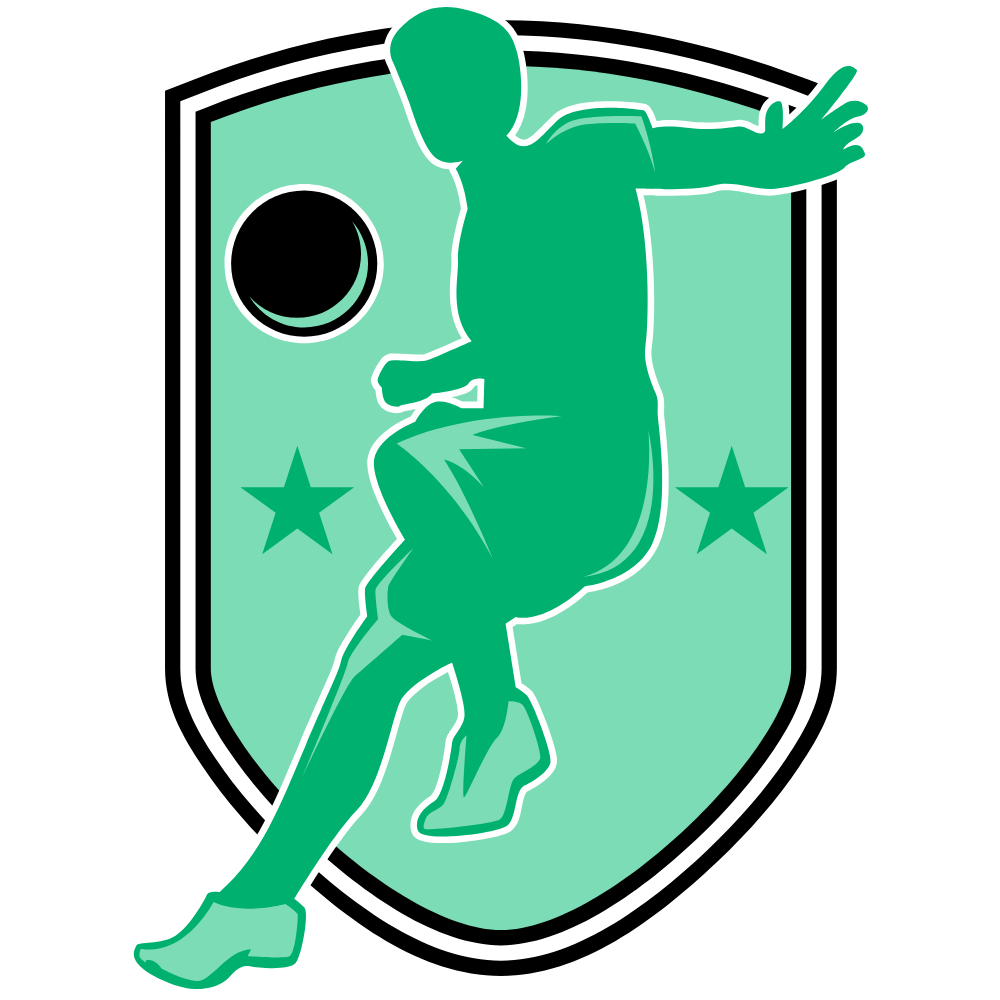When it comes to flag football, choosing the right footwear is crucial for both performance and safety. Many players, especially those transitioning from other sports like soccer, might wonder whether they can wear soccer cleats for flag football. The importance of proper footwear cannot be overstated, as it plays a significant role in the player’s comfort, traction, and ability to pivot or change direction quickly.
Flag football, unlike traditional football, has different demands on footwear due to its focus on speed, agility, and playing on turf or grass fields. Soccer cleats, designed with a specific stud pattern, are typically optimized for the demands of soccer, such as maintaining stability during kicking. To learn more about what footwear works best for flag football, explore how different cleats impact performance on the field. However, flag football requires footwear that can provide grip, stability, and flexibility, especially given the dynamic movements needed to avoid opponents and make sharp turns.
In this article, we will explore whether soccer cleats can be used for flag football, and assess the key features of both soccer cleats and flag football cleats. Understanding whether you can wear soccer cleats for flag football involves considering several factors like traction, comfort, and safety.
What Are Soccer Cleats and Flag Football Cleats
Soccer cleats and flag football cleats are designed with different purposes in mind, and their features reflect these needs. Soccer cleats are primarily built to enhance a player’s ability to sprint, change direction quickly, and maintain traction on grass or turf fields. The most distinct feature of soccer cleats is the stud pattern. These studs are often pointed and distributed evenly, offering a balance between grip and agility during running or kicking. Soccer cleats are typically lightweight, with a flexible upper that allows for a better feel of the ball while maintaining speed and comfort.
Flag football cleats, on the other hand, are designed to provide better traction and stability while focusing on quick lateral movements, making them ideal for the fast-paced and often unpredictable nature of flag football. The studs on flag football cleats are usually shorter and bladed, which help players maintain control and balance during quick cuts, pivots, and sharp turns. Additionally, flag football cleats tend to have a more supportive structure, with padding around the ankle to provide extra comfort and prevent injury during high-intensity plays.
Understanding if can you wear soccer cleats for flag football can be tricky due to their differing designs. While soccer cleats may be suitable for certain flag football conditions, their stud patterns and design may not provide the level of grip and stability required for optimal performance. Flag football cleats, in contrast, are more tailored for the specific movements and demands of the sport, ensuring players maintain balance while avoiding potential injury.
Key Features of Soccer Cleats and Their Impact
When considering whether can you wear soccer cleats for flag football, it’s essential to understand the key features of soccer cleats and how they may impact your performance in flag football. Soccer cleats are designed to optimize forward motion and speed, but flag football requires a different set of traits, like stability during quick direction changes. The following features are crucial when determining if soccer cleats are suitable for flag football:
- Grip: Soccer cleats provide excellent grip on grass fields, but flag football often requires lateral traction for quick cuts.
- Stud Pattern: Pointed, evenly spaced studs are common in soccer cleats, which are more suited for running forward. In flag football, players need cleats that allow for quick side-to-side movement.
- Weight: Soccer cleats are lightweight to enhance speed, but they may lack ankle support needed for the high-speed agility of flag football.
- Comfort: While soccer cleats are comfortable for running, flag football requires extra support around the ankles to prevent injury.
- Durability: Soccer cleats are durable on grass, but playing on turf in flag football can cause them to wear out more quickly.
When deciding if you can wear soccer cleats for flag football, there are some important things to think about. Soccer cleats can help you run fast, but they might not hold your feet in place as well as you need when playing flag football, where you move sideways a lot. Flag football cleats are made to help you move better and stay steady while you play.
Wearing Soccer Cleats for Flag Football
Can you wear soccer shoes for flag football? It depends on a few things, like where you’re playing, how the game is set up, and what feels best for you. Soccer shoes are made to help you run fast and move quickly, especially on grass. If you’re playing flag football on grass, soccer shoes can help you run straight without slipping. They’re light and comfy, which is great if you want to be speedy in the game!
However, flag football is a different type of sport. It requires a lot of lateral movements, quick direction changes, and sharp pivots—things that soccer cleats are not specifically designed for. The stud pattern in soccer cleats is typically pointed and evenly spaced, which is optimized for forward motion, but may lack the lateral traction necessary for making quick cuts or shifting direction rapidly. This can lead to a lack of stability, which increases the risk of slipping or twisting an ankle during flag football’s fast-paced and unpredictable plays.
Another downside to using soccer cleats for flag football is the lack of ankle support. Soccer cleats often have a lower cut, which doesn’t provide the same level of ankle protection as flag football cleats, which are usually designed to offer more support during the intense movements of the game. This can be a concern, especially for players who are more prone to ankle injuries. Moreover, if you’re playing on artificial turf, the wear and tear on soccer cleats can be significant, as they are not built to withstand the abrasiveness of turf surfaces as well as flag football cleats.
In conclusion, while soccer cleats can work in certain flag football conditions, they may not be the best choice if you require additional lateral stability or ankle support. If you’re playing on grass and prioritizing speed, soccer cleats can be a suitable option, but if you’re playing on turf or need extra support for quick lateral movements, flag football cleats are a better fit.
Risks of Using Soccer Cleats for Flag Football
When considering can you wear soccer cleats for flag football, it’s essential to understand the risks involved. While soccer cleats offer some advantages, such as comfort and speed, they are not specifically designed to meet the demands of flag football. The following table compares key factors—safety, grip, and performance—between soccer cleats and flag football cleats, highlighting why these differences matter.
| Factor | Soccer Cleats | Flag Football Cleats |
|---|---|---|
| Safety | Limited ankle support; risk of sprained ankles in high-speed lateral movements. | Provides additional ankle support, reducing injury risk. |
| Grip | Optimal for forward motion, but lacks lateral traction for quick cuts. | Designed for lateral movement, providing better traction for flag football’s dynamic play. |
| Performance | Great for speed and forward motion, but may compromise stability and balance. | Supports quick, multidirectional movements, enhancing overall performance in flag football. |
As shown in the table, one of the primary risks of using soccer cleats for flag football is the lack of ankle support. Soccer cleats are generally low-cut and offer minimal ankle protection, which can increase the risk of injury, especially during rapid lateral movements or pivots. Flag football requires a lot of side-to-side motion, and the limited ankle stability provided by soccer cleats can leave players vulnerable to sprains or twists.
In terms of grip, soccer cleats are designed to offer optimal traction for forward sprinting but lack the lateral studs necessary for the quick direction changes in flag football. Without the appropriate grip for lateral movements, players may find themselves slipping or losing balance during cuts, reducing their overall performance.
If you’re thinking about wearing soccer shoes for flag football, it’s important to know that they might not be the best choice. Soccer shoes don’t have special features that help you move side to side and stay safe while playing. They can work okay for just having fun or playing lightly, but they aren’t made for the fast and tricky moves in flag football. Flag football shoes are specially designed to give you better support for your ankles and help you grip the ground better, which keeps you safe and helps you play your best.
Alternative Footwear for Flag Football
If you’re unsure about can you wear soccer cleats for flag football, there are several alternatives that can offer better performance and safety. Flag football requires footwear that provides lateral support, traction, and stability. Here are some alternatives:
- Football Cleats: Designed for football, offering excellent grip and ankle support.
- Turf Shoes: Rubber outsoles designed for artificial surfaces, providing good traction and comfort.
- Cross-Training Shoes: Versatile shoes that offer a balance of support, comfort, and grip.
- Cleat-less Sports Shoes: Flat soles for softer surfaces, providing comfort for casual play.
- Track Shoes: Lightweight, offering excellent traction for straight-line running.
Football cleats are one of the most popular alternatives for flag football. Unlike soccer cleats, football cleats are designed for multidirectional movement, offering superior traction for quick cuts and lateral movements, which are common in flag football. These cleats also provide more ankle support, reducing the risk of injury. The stud patterns in football cleats are often bladed or circular, giving players the necessary grip on turf or grass fields.
Turf shoes are another great option for flag football, especially if you’re playing on artificial surfaces. With rubber outsoles that provide excellent traction on turf, these shoes help prevent slipping during sharp movements and allow for comfortable, quick changes in direction. Turf shoes also offer a more stable base for players looking to make precise cuts or pivots during gameplay.
For those who prefer a more versatile footwear option, cross-training shoes can be an effective choice. While not designed specifically for flag football, cross-trainers provide adequate comfort, grip, and ankle support for moderate play. Their balanced design allows for stability during quick footwork and movement across various surfaces. If you’re playing in a more casual setting or on softer grass, cleat-less sports shoes might also be an option, although they lack the same level of traction and support as cleats.
Conclusion
In conclusion, while you can wear soccer cleats for flag football, there are specific factors to consider before making that choice. The decision on footwear largely depends on the playing conditions, comfort, and safety. Soccer cleats may be suitable for grass fields and players focused on speed, but they lack the lateral support and stability required for flag football’s dynamic movements. If you’re playing on turf or need more ankle protection, flag football cleats or turf shoes are better options. These types of footwear are designed to handle the lateral cuts and quick direction changes that are central to flag football, while also providing additional ankle support to reduce injury risk.
When deciding, it’s also essential to consider the surface you’ll be playing on. Turf shoes are an excellent choice for artificial surfaces, offering grip without the risk of excessive wear. Football cleats provide superior grip and support for both grass and turf, making them ideal for players who need to make quick lateral moves. Cross-training shoes offer versatility for recreational players but may not provide the same level of traction or ankle protection.
Ultimately, choosing the right footwear for flag football is about balancing comfort, safety, and performance. Make sure the cleats or shoes you select cater to your specific needs, whether it’s for stability, grip, or overall comfort during the game.




